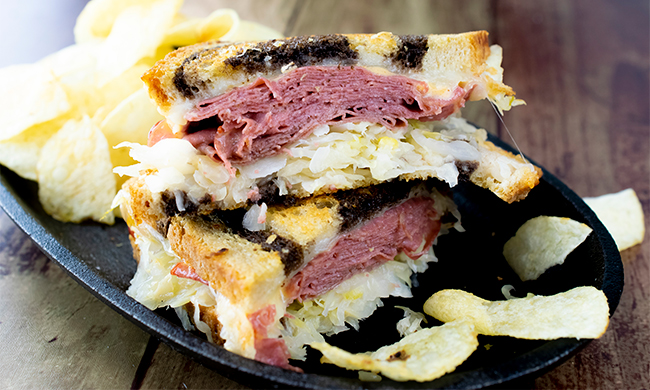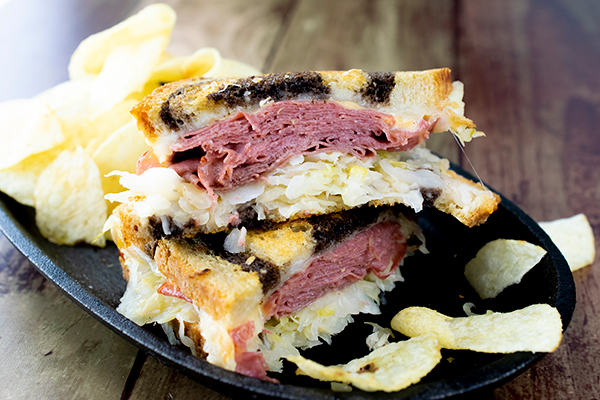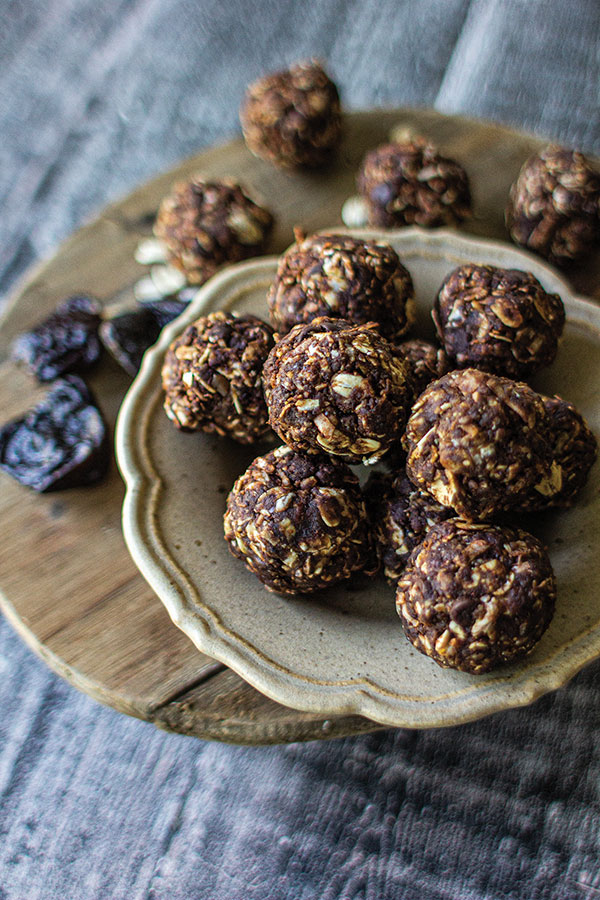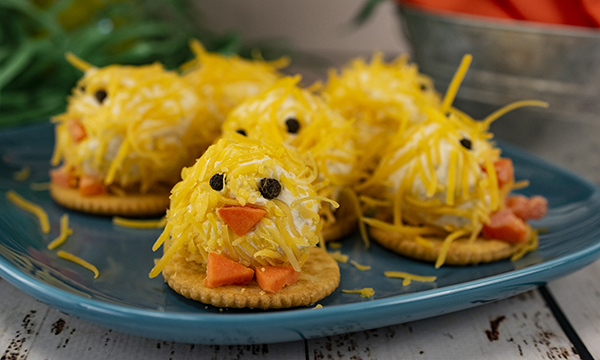Sunday, March 12, 2023
Investing in early childhood educators made it possible for teachers to achieve their dreams
4 top home tech trends and innovations from CES 2023
We Are ALL Hybrids
5 tips for parents to encourage a lasting love of reading
Saturday, March 11, 2023
Taking a holiday vacation with your pet? 4 tips from a veterinarian for keeping them safe during travel
Partnering with the pros: How to get your lawn ready for spring
This Heart Health Month, Keep Your Family's Heart Health Top of Mind with These Recipes
Thursday, March 9, 2023
Strong, Stylish Spring Home Upgrades

5 renovation projects where brick takes center stage
Springtime is a perfect opportunity for homeowners to begin planning renovations to enhance the interior and exterior of their living space. Because of its strong performance capabilities, low maintenance and design flexibility, brick is a popular building material choice when looking to improve or refresh your home in time for warm-weather hosting season.
Often selected for its functional benefits, brick is available in a wide array of colors, textures and sizes that can match varying design styles, from modern to traditional and almost everything between. If you’re considering adding brick to your home’s aesthetic, consider these five projects to tackle this spring from the experts at Glen-Gery, one of the largest brick and stone manufacturers in North America.
Basement or patio bar – As homeowners spend more time at home, they often look to maximize livable space. One way to take advantage of unused living space is building a basement or patio bar, which provides an area for entertaining. Using an exposed brick wall can help designate the bar area and separate it from the rest of the basement, or lining a bar counter with brick can create a rustic contrast against the bar’s seating.
 Fireplace – To change the look and feel of a room almost instantly, you can use brick to give a fireplace a facelift or make it a focal point of your home. Available in a variety of colors and textures, Glen-Gery’s diverse, premium portfolio of more than 600 brick and stone products can elevate your living room’s style in a big way and create a more inviting area to share with family and friends. An outdoor fireplace is another option for extending livable space in a cozy way that can be used throughout the year.
Fireplace – To change the look and feel of a room almost instantly, you can use brick to give a fireplace a facelift or make it a focal point of your home. Available in a variety of colors and textures, Glen-Gery’s diverse, premium portfolio of more than 600 brick and stone products can elevate your living room’s style in a big way and create a more inviting area to share with family and friends. An outdoor fireplace is another option for extending livable space in a cozy way that can be used throughout the year.
Accent wall – Create a statement in or outside your home with a brick accent wall. Accent walls can help bring color, texture and beauty to homes by breaking up the monotony of monochromatic color or decor, creating visual interest and dimension. While brick in a running bond pattern is expected, you can spice up rooms with an unexpected bond pattern like a stacked bond for modern appeal or herringbone for a rustic look.
Kitchen backsplash – One of the most overlooked areas of kitchen design is the backsplash. While its job is to protect your kitchen walls from the never-ending assault of kitchen splatters, there’s no reason it can’t look good, too. Brick backsplashes can accommodate most home designs and styles thanks to the versatility of shapes, colors, finishes and sizes available.
Black or white glazed brick works well with more modern kitchens while irregular brick containing an abundance of texture and a messy mortar application can complete rustic farmhouse kitchens. An option like Glen-Gery’s virtual design tool, Picture Perfect, can help you visualize projects in your home to see what fits your style and needs.
Brick skirt – For added curb appeal, consider adding a brick skirt around the foundation of your home. Given its resilient, durable and energy-efficient qualities, brick can help provide better insulation and protection while also adding visual appeal to the exterior of your home through texture, color and contrast. The skirting can also continue through to the front porch floor and steps, helping balance out the elevation of your home.
For more inspiration for your next home renovation project, visit glengery.com.
Glen-Gery
5 hábitos de sueño esenciales para la salud del corazón

En los días posteriores a un cambio de hora debido al horario de verano, las investigaciones muestran un marcado aumento de los ataques cardíacos y accidentes cerebrovasculares. Sin embargo, perder el sueño en cualquier momento puede ser un importante factor de riesgo de enfermedad cardiovascular.
“Dormir bien todas las noches es vital para la salud cardiovascular”, afirma Donald M. Lloyd-Jones, M.D., Sc.M., FAHA, ex presidente voluntario de la American Heart Association y director del Departamento de Medicina Preventiva, catedrático Eileen M. Foell de investigación cardiovascular y profesor de medicina preventiva, medicina y pediatría en la Facultad de Medicina Feinberg de la Universidad Northwestern. “Los adultos deben aspirar a un promedio de 7 a 9 horas y los bebés y los niños necesitan más dependiendo de su edad. Desafortunadamente, sabemos que 1 de cada 3 personas no duermen la cantidad de sueño recomendada cada noche”.
Según Lloyd-Jones, la cantidad de sueño y la calidad del sueño son importantes, y ambos pueden tener un impacto significativo en la salud cardiovascular, así como en la salud en general. Además de aumentar el riesgo de padecer enfermedades cardiovasculares como ataque cardíaco y accidente cerebrovascular, la falta de sueño también puede poner a las personas en riesgo de sufrir depresión, deterioro cognitivo y obesidad.
La investigación en el “Diario de la American Heart Association” muestra que mantener un patrón de sueño constante puede desempeñar un papel importante en la prevención de enfermedades cardiovasculares. Los investigadores encontraron que quedarse dormido a diferentes horas o dormir una cantidad inconsistente de horas cada noche, incluso variaciones de más de dos horas por noche dentro de la misma semana, estaban relacionados con el desarrollo de endurecimiento de las arterias, lo que se conoce como aterosclerosis.
“Sabemos que las personas que duermen lo suficiente también manejan mejor otros factores de salud, como el peso, el azúcar en la sangre y la presión arterial”, explicó Lloyd-Jones. “La American Heart Association agregó recientemente el sueño a la lista de factores que respaldan una salud cardiovascular óptima. Los llamamos Life's Essential 8 e incluyen comer una dieta saludable, no fumar ni vapear, estar físicamente activo y dormir lo suficiente, además de controlar su presión arterial y mantener niveles saludables de colesterol y lípidos, niveles saludables de azúcar en la sangre y un peso saludable.”
Considere que estos son pequeños cambios en los hábitos diarios que pueden marcar una gran diferencia en la calidad del sueño:
- Haga de la vida saludable un hábito: coma una dieta balanceada, realice actividad física regular y controle el estrés para fomentar una noche de sueño más saludable.
- Establezca alarmas para la mañana y la noche: cumpla con los horarios específicos para acostarse y despertarse todos los días y comprométase con un horario de sueño constante tanto como sea posible. Junto con una alarma para despertarse, pruebe con una alarma para la hora de dormir para indicar que es hora de empezar a relajarse.
- Establezca hábitos a la hora de acostarse: una vez que suene la alarma de la hora de acostarse, pase a un ritual familiar, como cepillarse los dientes, lavarse la cara o tomar un baño tibio.
- Relájese y descanse: tómese unos minutos para desestresarse. Considere leer, escribir un diario, meditar o escuchar música para pasar una buena noche de descanso.
- Tómese un descanso de la tecnología: un dormitorio sin luz ni tecnología equivale a dormir mejor, así que mantenga su teléfono y otros dispositivos alejados de la cama. Intente cerrar sesión en sus dispositivos electrónicos al menos una hora antes de acostarse.
Obtenga más información sobre la importancia del sueño para la salud del corazón en heart.org.
American Heart Association
Monitoring Your Kidney Health

Kidney disease is one of the most common complications of living with diabetes and can increase your risk for heart disease and stroke. There are steps you can take to keep your heart, brain and kidneys healthy, including an annual kidney screening. A urine Albumin-to-Creatinine Ratio test is a simple urine test used to identify early signs of kidney disease and give you and your health care team important information to manage your risk. Learn more about taking charge of your health at KnowDiabetesbyHeart.org.
American Heart Association
3 Ways Parents Can Encourage Social Emotional Learning in Children

Most parents would agree the quality of their children’s education plays a key role in their overall development. While parents are optimistic about the future of education, they also recognize children have educational needs beyond what is considered the standard.
A Harris Poll survey on behalf of KinderCare found 83% of parents believe it’s important for children to be raised with social emotional skills, 84% believe it’s important children learn to treat others the way they want to be treated and 83% believe kindness should be a core value in the way children are educated. Now, parents want a focus on social emotional skills, mental health, kindness and understanding differences.
Consider these three ways parents can encourage social and emotional learning in their children:
- Practice Emotional Literacy at Home: Disagreements among parents and siblings are almost inevitable at home. While this can seem challenging to handle, it can serve as an opportunity for children to practice emotional literacy by identifying their feelings and the feelings of others. It also gives children the opportunity to practice their listening skills and put themselves in the other person’s shoes. By using these skills, children can develop a stronger sense of empathy and understand how their emotions drive their actions.
- Practice Mindfulness with a Relaxing Activity: Mindfulness can help children understand and regulate their emotions, especially when it becomes a regular habit. Parents can instill this habit in their kids by picking a set time to do activities in a calm space at home every day such as reading a book, listening to calm music or something as simple as deep breathing.
- Provide Unplugged Opportunities to Connect with Other Children: Activities that don’t revolve around a screen and encourage in-person socialization with peers can provide opportunities for children to practice building their social emotional skills. Programs like KinderCare’s Champ Camp include indoor and outdoor group activities as well as field trips designed to help children use their natural creativity and curiosity to learn and develop important social skills.
To learn more about social emotional learning, visit kindercare.com.
KinderCare
Monday, March 6, 2023
Super Foods for a Nutritious Diet

(Family Features) The health community has long praised the benefits of vitamins and nutrients derived from natural sources. For those looking to improve their health or take preventative measures, these 10 natural super foods can be incorporated into your daily diet to help support your health:
Green Tea – Armed with a special type of antioxidants called polyphenols, green tea can decrease plaque formed in the arteries and can fight prostate cancer.
Rosemary – Studies have shown this powerful spice can reduce the risk of stroke, as well as protect against Alzheimer’s disease.
Almonds – Full of plant sterols and amino acids, almonds can help lower high cholesterol and promote muscle growth. These handheld treats are also rich in vitamin E, which can protect skin from sun damage.
Fatty Fish – Rich in omega-3 fatty acids, fatty fish such as salmon, flounder and sardines can lower the risk of heart disease.
Bananas – This easy, portable snack is loaded with essential potassium, which regulates the nervous system. Bananas also offer loads of vitamin B-6, which aids immunity and metabolism.
Whole Grains – These powerful body defenders have been known to boost immunity, protect against various cancers and reduce cholesterol.
Eggs – These energy-packed breakfast favorites contain a special type of protein that helps build muscle strength more than other proteins. When compared to other breakfast foods, eggs can also keep you feeling fuller longer with fewer calories and fat.
Spinach – Chock-full of magnesium, potassium and various vitamins and nutrients, spinach can prevent clogged arteries and protect against prostate and colon cancers.
Soy – This protein-packed food contains isoflavones, which can aid in treatment and prevention of prostate cancer. Also, research from the Food and Drug Administration shows that 25 grams per day can help lessen the risk of heart disease.
Dark Chocolate – Satisfy your sweet tooth and improve blood flow to the brain at the same time. Dark chocolate can also lower blood pressure and increase skin’s resistance to UV rays.
Find more health-conscious tips at eLivingToday.com.
eLivingToday.com
Spasticity 101: A debilitating yet treatable common condition after a stroke

In the year following a stroke, about 1 in 3 stroke survivors will experience spasticity, a common post-stroke condition which causes muscle stiffness due to involuntary muscle contractions. Most commonly affecting the elbow, wrist and ankle, the condition may make it difficult to do activities people were able to do before their stroke like dressing, brushing their teeth or walking.
More than 3 million stroke survivors may wrestle with reduced independence and increased reliance on caregivers due to spasticity. The condition is particularly common in younger stroke survivors.
After a stroke, the way your brain communicates with your muscles may change. Muscles may be stiff or resistant to stretching. They may involuntarily contract or have a smaller range of motion.
“While there’s no cure for spasticity, working with your care team to find the best treatment options for you can help provide comfort, relief and independence,” said Richard D. Zorowitz, MD, volunteer past chair of the American Heart Association’s Stroke Council Rehabilitation and Recovery Committee and chief medical informatics officer and outpatient attending physician at MedStar National Rehabilitation Network.
Some common symptoms include painful muscle spasms; difficulty stretching muscles; stiffness in the arm, hand, leg and ankle; an arm folded and pressed against the chest with a curled wrist and fingers; an involuntary tight fist; pointed foot; curled toes; and overactive reflexes.
If left untreated, spasticity can cause painful and debilitating bone and joint deformities. Experts stress seeing a doctor as soon as symptoms develop. Assessment of the condition is critical in developing a treatment plan based on individual needs and goals, the severity of the condition and overall health.
Management plans may include targeted injections of botulinum toxin, oral medications, intrathecal baclofen pump therapy, physical therapy or other methods to improve the muscles’ ability to stretch and regain range of motion. Home modifications such as assistive devices and other adaptations to increase independence and safety may also help.
If you or a loved one is dealing with spasticity after a stroke, talk to your doctor or health care team about options to treat and manage it. Find resources and tools to help at Stroke.org/Spasticity. Spasticity education made possible through funding by Ipsen.
Knowing the Signs of Stroke Saved One Man’s Life
 When Herbert “Hub” Miller worked as a global leader for an international agriculture science company, his boss ended every meeting with a reminder of the “FAST” acronym to recognize the signs of stroke: Face drooping, Arm weakness, Speech difficulties and Time to call 911.
When Herbert “Hub” Miller worked as a global leader for an international agriculture science company, his boss ended every meeting with a reminder of the “FAST” acronym to recognize the signs of stroke: Face drooping, Arm weakness, Speech difficulties and Time to call 911.
“I’d sit back and think, ‘Here comes the whole FAST speech again; let’s move on,’” Miller said. “I didn’t know I’d ever use it on myself.”
In April 2021, Miller was working from home when he experienced throbbing head pain. As other symptoms began appearing, the 42-year-old remembered those meetings and checked off the symptoms: His face was numb, his left arm drooped and he struggled to form words.
It turned out to be a hemorrhagic stroke, a ruptured blood vessel bleeding into the brain. Miller’s odds of surviving weren’t good, but it wasn’t until he was recovering in intensive care that he understood the full impact of the stroke. It caused abnormal increases in muscle tone causing stiffness, pain and spasms known as spasticity, leaving him with mobility and cognitive challenges.
After the stroke, Miller struggled with once-simple tasks like drawing a clock, completing a word puzzle and playing memory games.
“Spasticity changed my life and added an additional hurdle to my stroke recovery,” Miller said. “Without being able to open and close my left hand, I can’t write, type or drive like I used to. Those are things most of us take for granted until we can’t do them.”
Miller worked on his penmanship at the same time his youngest son learned to write in the first grade. Miller asked the teacher to send home extra worksheets, and father and son did homework together.
“I don’t measure my success day by day, but when I look back to a year ago and where I am today, I am grateful every day how far I have come,” he said.
American Heart Association
Pets for Better Wellbeing

Through trying times, pets continue to play a critical role in people’s everyday lives, easing minds and filling hearts. Ninety-two percent of pet owners feel their relationship with their pets helped improve their mental and physical wellbeing over the last three years, according to the “Pets for Better Wellbeing” report by Mars Petcare, which examined the impact of pet ownership on wellbeing and analyzed potential hurdles to adding four-legged family members. Learn more at BetterCitiesforPets.com/2022Report.
Mars Petcare
Friday, March 3, 2023
4 reasons dairy in school meals is critical to children's health
School meals are a lifeline for many children who face hunger. Nearly 30 million children rely on school meals every day. Also, according to a 2021 peer-reviewed study by researchers at Tufts University and Icahn School of Medicine, food consumed at schools had the highest nutritional quality compared to foods consumed from grocery stores, restaurants and other major food sources.
School meals may be the only nutritious meal children get on some days. Even for children who don't face food insecurity, school meals can fill the gaps in their diet, especially when it comes to nutrients provided by dairy foods. In fact, children who participate in school meals consume more dairy milk, fruits and vegetables than non-participants, and they consume fewer desserts and snacks.
Starting at 4 years of age, many children's diets, especially those from communities of color, do not meet the daily dairy consumption recommended by the 2020-2025 Dietary Guidelines for Americans. This is significant because nutrient-rich milk provides calcium, vitamin D and potassium, three nutrients of concern many children lack in their diets.
Despite the benefits of dairy, there are misperceptions about dairy foods and the quality of school meals. Below are four facts about how dairy in school meals helps nourish growing and learning students.
1. School meals are a main source of dairy
School meals are a key source of dairy for many school-age children. According to the U.S. Department of Agriculture, foods provided as part of school meals are the richest source of dairy in children's diets. In fact, school meals provide up to 2 of the 3 recommended daily servings of dairy.
For low-income children, school meals provide 77% of their daily dairy milk consumption and 70% of total dairy consumption, according to a 2017 study published in Preventative Medicine Reports. Milk and dairy foods, like cheese and yogurt, provided in school meals are critical to helping ensure children of all economic backgrounds benefit from dairy's nutrients.
2. A variety of milk options are offered and all deliver nutrients
Schools offer a variety of milk options, including fat-free, low-fat, flavored and lactose-free milk. No matter which kind of milk a student chooses, each option provides 13 essential nutrients that benefit health.
A note on lactose-free milk: Contrary to popular belief, a student doesn't need documentation, such as a parent letter or physician statement, to have lactose-free milk. It is allowed in school meal programs to address students' health needs. For instance, according to Donna Martin, EdS, RDN, LD, SNS, FAND, school nutrition director at Burke County Schools in Georgia, "I represent a school district with a high African American population and lactose-free milk is served as an option for any of my students who want it, helping them benefit from milk's hard-to-replace nutrient content."
3. Flavored milk is lower in added sugar than you may think
Many parents and health professionals are concerned about added sugars in the overall diet. The good news is that milk companies have worked with schools to reduce the amount of added sugars in flavored milk available in schools.
According to National Dairy Council, between 2007 and 2021, the U.S. dairy community reduced added sugars in flavored milk in schools by nearly 50%. The average flavored milk served in schools has 126 calories — just 29 more calories than unflavored milk. At the end of the day, according to NHANES data, flavored milk contributes only 4% of added sugars in the diets of children 2-18 years old, with the bulk of added sugars coming from soft drinks.
4. Flavored milk increases milk and nutrient consumption
According to a study published in Nutrition Today, removing flavored milk from schools can lead to a decrease in total milk consumption and negatively impact the ability for children to meet their nutritional needs.
Drinking flavored milk can actually help children meet their nutritional needs. A 2022 study from ACTA Scientific Nutritional Health journal showed that consumers of flavored milk drank approximately 1-cup more of total milk, which contributed to higher consumption of calcium, potassium, magnesium, phosphorus and vitamins A, D and B-12 and riboflavin than non-consumers. In fact, they consumed 51% more vitamin D, 27% more calcium and 16% more potassium compared to non-flavored milk drinkers.
These are just a few facts that underscore the importance of milk and dairy foods as part of nutrient-rich school meals. Without this critical food group as part of healthy eating patterns provided by school meals, children may not receive all the nutrients they need to grow and learn in their childhood and teen years.
Top health benefits of incorporating fresh pet food in your dog's diet
If you’re worried whether you’re giving your dog the best food for their health, you’re not alone. The newest generation of pet parents consider their pet’s food choices to be just as important as their own. Compared to previous generations, the next generation of pet parents are five times more likely to add a topper to their dog’s kibble to elevate the dog’s mealtime experience, according to a fresh pet food study conducted by Wellness Pet Company with The Valen Group. That adds up to nearly 4 out of 10 next gen pet parents (38%) who are topping their dog’s food each day. The study also shows that millennial and Gen Z pet parents are willing to pay up to 15% more for a premium nutritional choice, driven by their desire to seek higher quality ingredients and nutrition for the health and wellness of their pet — so they can enjoy a lifetime of wellbeing together. This growing interest in providing four-legged family members with better fresh nutrition options led Wellness Pet Food to expand their Wellness® Bowl Boosters® line with the launch of Wellness® Bowl Boosters Freshly™ in June 2022. These fresh toppers are supercharging dogs’ existing kibble with complete and balanced nutrition that dogs and pet parents love.
Dr. Danielle Bernal, global veterinarian with Wellness Pet Company, knows how high-quality fresh foods make a difference in dogs' overall health and elevate mealtime excitement to a whole new level.
"Fresh, whole-food ingredients help give our dogs what they need, such as all-day energy, strong bones and immunity as we navigate life's adventures together," said Bernal. “With premium protein, rice and a variety of vegetables, our newest recipes are energizing the pet and pet parent relationship at mealtime, supporting all that they love to do together.”
If you’re unsure how to tell if your dog's food provides sufficient nutrition to optimize their health, Dr. Bernal offers some important things to consider.
1. How do you know your dog’s food is supporting their physical well-being? Look for signs like:
- Healthy skin and shiny coat
- All-day energy that keeps them running and playing
- Healthy digestion so you know your pet is absorbing essential nutrients
- Strong teeth and bones that help them eat well and stay active
- Healthy immune system that keeps dogs feeling their best
2. What ingredients in fresh products like Wellness® Bowl Boosters Freshly™ benefit your dog’s health and how?
- Guaranteed antioxidants like Vitamins A and E for immune system support
- Omega-3 fatty acids from flaxseed or salmon oil for a lustrous skin and coat
- Calcium and phosphorus for strong teeth and bones
- Wholesome veggies and grains like carrots and rice for natural dietary fibers to support digestive health and provide the energy your pet needs
- Increased nutrient absorption from highly digestible proteins, fats and carbohydrates to help fuel total wellbeing
- Fresh food toppers like Wellness® Bowl Boosters Freshly™ provide increased total hydration to support daily activity and put less strain on major organs, and help aid overall kidney and urinary health
- With a homecooked texture and high-quality fresh ingredients, a fresh topper is the ultimate way to make mealtimes exciting and more bowl-licking delicious for your pup
- “Veterinarians and food scientists at Wellness Pet Company ensure that each recipe delivers more than just the finest quality ingredients,” Bernal noted. “Our recipes provide a complete and balanced meal that meets the nutrient, vitamin and mineral needs of a dog at any life stage to promote a lifetime of shared wellbeing.”
3. Suggestions for how pet parents can use fresh foods in their daily mealtime routine
Pet parents have options on how to feed their dog fresh food, whether they are choosing to top their existing kibble with fresh food or serving as a complete meal. Remember:
- Once thawed, fresh food needs to be refrigerated and enjoyed within five days.
- Choose flavors your dog will love — Wellness® Bowl Boosters Freshly™ recipes, for example, offer a variety of ingredients: 1) Chicken and Butternut Squash, 2) Beef and Carrots, 3) Turkey and Sweet Potatoes — and 4) a recipe made specifically for puppies, with Puppy Turkey and Rice.
“With high-quality meats, healthy grains and wholesome veggies, this fresh food delivers a tasty boost that elevates every dog’s mealtime unlike any other, for a delicious meal that even the fussiest dog will love,” added Bernal.
Wellness® Bowl Boosters Freshly™ not only supercharges your dog’s bowl but all that you do together: more backyard frolicking, longer walks, more road trips, cozier cuddles, more energetic play dates and of course more meaningful mealtimes.
Wellness® Bowl Boosters Freshly™ recipes are now available in freezers at PetSmart and Petco, with delivery options via DoorDash, and for purchase online at Chewy.com. Learn more about Wellness Pet Food at WellnessPetFood.com.
A St. Patrick's Day Sandwich

(Culinary.net) In honor of the day when everyone is Irish, welcome family and friends to a traditional St. Patrick’s Day lunch with this Reuben Sandwich recipe.
Find more seasonal recipes at Culinary.net.
Watch video to see how to make this recipe!

Reuben Sandwich
Servings: 2
- 2 tablespoons butter, softened
- 4 slices rye and pumpernickel swirl bread
- 4 slices swiss cheese
- 6 ounces corned beef
- 2 tablespoons, plus 2 teaspoons, Thousand Island Dressing, divided
- 4 tablespoons sauerkraut
- Heat nonstick skillet over medium heat.
- Spread 1 tablespoon butter on one side of two bread slices. Place buttered side down in heated skillet. Add two slices cheese to each bread slice. Spread 2 tablespoons dressing over cheese slices. Add 3 ounces corned beef to each bread slice.
- Spread 2 teaspoons dressing over corned beef. Spread 2 tablespoons sauerkraut over corned beef.
- Spread remaining butter on one side of remaining bread slices. Place buttered side up on top of sauerkraut.
- Cook 4-7 minutes each side, flipping once, until golden brown and cheese is melted.
Culinary.net
Bring On Dessert with Better-for-You Sweets

If healthier eating holds a prominent spot on your list of goals, you may feel it’s necessary to eliminate some of your sweetest favorites. However, committing to a nutritionally friendly way of life doesn’t have to leave desserts by the wayside.
Instead, rethinking nighttime treats with better-for-you ingredients like California Prunes as a quick substitution can make healthier eating easy. As a versatile ingredient that can replace added sugar, fats and eggs in all kinds of recipes, prunes can also add nutrients important for bone and gut health.
Plus, the copper in prunes inhibits bone breakdown, while boron plays a role in calcium metabolism and polyphenols can help decrease bone breakdown through their antioxidant power. As a fruit that’s high in vitamin K, which helps improve calcium balance and promotes bone mineralization, prunes are also a “good gut food,” meaning a single serving (roughly 4-6 prunes) can help support a healthy microbiome.
They’re easy to use in recipes that can become favorites in your household such as these Chocolate Energy Balls. Enjoyed as an easy, on-the-go snack, they’re a perfect way to refuel for an adventure, recharge after a workout or to simply savor as a healthy snack.
Chocolate lovers rejoice: This rich, delicious, gluten-free, grain-free Chocolate Covered Prune Fudge Cake is naturally sweetened using prunes instead of added sugar. If brownies are more your style, prunes can also take the place of eggs in these Vegan Brownies for a family-friendly treat that won’t wreck your eating plan.
To find more better-for-you desserts, visit californiaprunes.org.
Vegan Brownies
Prep time: 10 minutes
Cook time: 25 minutes
Servings: 9
Prune Puree:
- 16 ounces pitted California prunes
- 1/2 cup hot water
Brownies:
- nonstick cooking spray
- 6 ounces unsweetened chocolate
- 1/2 cup California extra-virgin olive oil
- 2 cups light brown sugar
- 10 ounces California prune puree
- 1 1/2 cups all-purpose flour
- 1 tablespoon baking powder
- 1/4 cup cocoa powder
- 2 teaspoons vanilla extract
- flaky sea salt, for garnish
- To make prune puree: In blender, combine prunes and water. Pulse to combine then blend until smooth, pourable consistency forms, scraping sides, if necessary.
- Store puree in airtight container in fridge up to 4 weeks.
- To make brownies: Preheat oven to 350 F. Line 9-by-9-inch baking pan with parchment paper then lightly grease with nonstick cooking spray.
- Using double boiler, melt chocolate and olive oil. Whisk in sugar and prune puree; mix until dissolved.
- Into large bowl, sift flour, baking powder and cocoa powder. Gently fold in chocolate and prune mixture then add vanilla.
- Spread batter in prepared pan, sprinkle with flaky sea salt and bake 20-25 minutes, or until top starts to look dry and brownies are just beginning to pull away from sides of pan.
- Cool in pan. Remove then cut brownies into 3-inch squares.

Chocolate Covered Prune Fudge Cake
Prep time: 15 minutes
Cook time: 55 minutes
Yield: 1 cake (8 inches)
Cake:
- Coconut oil spray
- 14 tablespoons butter, chopped
- 2 teaspoons vanilla extract
- 3/4 cup cocoa powder
- 10 soft, pitted prunes, chopped small
- 1/3 cup maple syrup
- 6 eggs
- 1/2 cup coconut sugar
- 1 cup almond meal
Ganache:
- 1 cup full-fat coconut milk
- 1 1/3 cups dark chocolate morsels
- To make cake: Preheat oven to 300 F. Lightly spray bottom and sides of 8-inch springform pan with coconut oil spray. Place round piece of parchment paper in bottom of pan and lightly spray with coconut oil spray.
- In small saucepan over low heat, place butter and vanilla. Use sieve to sift cocoa into saucepan. Stir with spatula until completely smooth. Remove from heat and set aside.
- In bowl of food processor fitted with "S" blade, place prunes and syrup. Top with cooled butter mixture then process until smooth. Transfer to large mixing bowl, scraping all chocolate mixture from food processor with spatula.
- In bowl of stand mixer fitted with whisk attachment, whip eggs and coconut sugar on high speed 7 minutes, or until tripled in volume.
- Add one-third of egg mixture to bowl with chocolate mixture. Using spatula, gently fold together until completely combined. Add almond meal and remaining egg mixture to bowl and gently fold to combine.
- Pour batter into prepared pan and bake 55 minutes, or until set. Once cooked through, transfer cake to cooling rack and cool completely in pan.
- To make ganache: In top of double boiler, melt coconut milk and dark chocolate until completely smooth. Pour prepared ganache over cake. Serve immediately for molten fudge effect or allow to completely set.

Chocolate Energy Balls
Recipe courtesy of Meg van der Kruik on behalf of California Prunes
Prep time: 10 minutes
Cook time: 30 minutes
Yield: 24 pieces
Prune Puree:
- 16 ounces pitted California prunes
- 1/2 cup hot water
Energy Balls:
- 1 cup old-fashioned or gluten-free oats
- 2/3 cup toasted, unsweetened shredded coconut
- 1/2 cup creamy natural nut butter (peanut or almond)
- 1/2 cup pecan meal
- 1/2 cup prune puree
- 1/4 cup unsweetened cocoa powder
- 1 teaspoon vanilla extract
- To make prune puree: In blender, combine prunes and water. Pulse to combine then blend until smooth, pourable consistency forms, scraping sides, if necessary.
- Store puree in airtight container in fridge up to 4 weeks.
- To make energy balls: In mixing bowl, stir oats, coconut, nut butter, pecan meal, prune puree, cocoa powder and vanilla until completely combined.
- Cover and chill in refrigerator 30 minutes. Once chilled, use small cookie scoop or measuring spoon to measure equal-sized amounts of mixture then form into balls by applying gentle pressure to dough using palms. Do not roll as balls will break apart.
- Store covered in airtight container in refrigerator up to 1 week.
California Prunes
Monday, February 27, 2023
Strong, Stylish Spring Home Upgrades

5 renovation projects where brick takes center stage
Springtime is a perfect opportunity for homeowners to begin planning renovations to enhance the interior and exterior of their living space. Because of its strong performance capabilities, low maintenance and design flexibility, brick is a popular building material choice when looking to improve or refresh your home in time for warm-weather hosting season.
Often selected for its functional benefits, brick is available in a wide array of colors, textures and sizes that can match varying design styles, from modern to traditional and almost everything between. If you’re considering adding brick to your home’s aesthetic, consider these five projects to tackle this spring from the experts at Glen-Gery, one of the largest brick and stone manufacturers in North America.
Basement or patio bar – As homeowners spend more time at home, they often look to maximize livable space. One way to take advantage of unused living space is building a basement or patio bar, which provides an area for entertaining. Using an exposed brick wall can help designate the bar area and separate it from the rest of the basement, or lining a bar counter with brick can create a rustic contrast against the bar’s seating.
 Fireplace – To change the look and feel of a room almost instantly, you can use brick to give a fireplace a facelift or make it a focal point of your home. Available in a variety of colors and textures, Glen-Gery’s diverse, premium portfolio of more than 600 brick and stone products can elevate your living room’s style in a big way and create a more inviting area to share with family and friends. An outdoor fireplace is another option for extending livable space in a cozy way that can be used throughout the year.
Fireplace – To change the look and feel of a room almost instantly, you can use brick to give a fireplace a facelift or make it a focal point of your home. Available in a variety of colors and textures, Glen-Gery’s diverse, premium portfolio of more than 600 brick and stone products can elevate your living room’s style in a big way and create a more inviting area to share with family and friends. An outdoor fireplace is another option for extending livable space in a cozy way that can be used throughout the year.
Accent wall – Create a statement in or outside your home with a brick accent wall. Accent walls can help bring color, texture and beauty to homes by breaking up the monotony of monochromatic color or decor, creating visual interest and dimension. While brick in a running bond pattern is expected, you can spice up rooms with an unexpected bond pattern like a stacked bond for modern appeal or herringbone for a rustic look.
Kitchen backsplash – One of the most overlooked areas of kitchen design is the backsplash. While its job is to protect your kitchen walls from the never-ending assault of kitchen splatters, there’s no reason it can’t look good, too. Brick backsplashes can accommodate most home designs and styles thanks to the versatility of shapes, colors, finishes and sizes available.
Black or white glazed brick works well with more modern kitchens while irregular brick containing an abundance of texture and a messy mortar application can complete rustic farmhouse kitchens. An option like Glen-Gery’s virtual design tool, Picture Perfect, can help you visualize projects in your home to see what fits your style and needs.
Brick skirt – For added curb appeal, consider adding a brick skirt around the foundation of your home. Given its resilient, durable and energy-efficient qualities, brick can help provide better insulation and protection while also adding visual appeal to the exterior of your home through texture, color and contrast. The skirting can also continue through to the front porch floor and steps, helping balance out the elevation of your home.
For more inspiration for your next home renovation project, visit glengery.com.
Glen-Gery
A Spring Spread Any Bunny Can Create

(Culinary.net) With spring in the air, it’s the perfect time to invite guests over for a hopping party. It’s also a great opportunity to tackle that dreadful spring cleaning and spruce up your living spaces with vibrant decor for visitors to enjoy alongside a delicious recipe.
With this sweet, colorful table arrangement, your whole family can get into the spring spirit. From festive utensils, a bright centerpiece and cute snacks, your spring setup can be fresh and fabulous.
It’s simple to put together and easy on the budget. Pair it with appetizers or even a main dish for a full spring party spread that’s sure to impress.
Find more springtime recipes at Culinary.net.
Watch video to see how to create this Spring Table Spread!

Chick Cheese Balls
Recipe adapted from Hallmark.com
Yield: 10 chicks
- 1 package cream cheese
- 1/4 tablespoon garlic powder
- 1 tablespoon Worcestershire sauce
- 1/2 lemon, juice only
- salt, to taste
- pepper, to taste
- 1 cup finely shredded cheddar cheese
- crackers
- carrots
- whole black peppercorns
- Using mixer, combine cream cheese, garlic powder, Worcestershire sauce and lemon juice. Add salt and pepper, to taste. Refrigerate mixture 1 hour.
- Using fingers, form about 1 tablespoon of cream cheese mixture at a time into balls. Refrigerate 30 minutes on small baking sheet.
- Before serving, roll each ball into shredded cheddar cheese to cover. Place each ball on round cracker.
- Cut small triangles from carrots for beaks and feet. Press carrots onto cheese balls. Add peppercorns for eyes.

Carrot Utensils
- Orange napkins
- green plastic silverware
- green ribbon
- Lay napkins flat on table. Place one of each utensil in napkin facing top corner. Wrap napkin around utensils. Tie ribbon around middle of napkin. Place in bowl or basket on table.

Spring Table Centerpiece
Recipe adapted from Craftmorning.com
- Jelly beans
- chocolate coated candy eggs
- marshmallow chicks
- fresh or fake flowers
- plastic or dyed eggs (optional)
- Place medium bowl inside large dish. Pour jelly beans and chocolate coated candy eggs around bowl.
- Add marshmallow chicks around dish on top of candies. Arrange fresh or fake flowers in center. Set on table as centerpiece. Place eggs around dish, if desired.
Culinary.net















